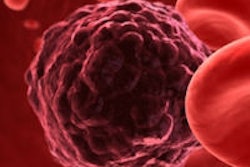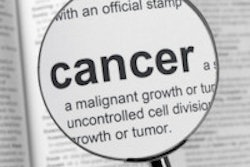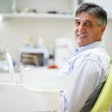
Patients with more dental caries are less likely to be diagnosed with head and neck squamous cell carcinoma (HNSCC) than patients with fewer or no caries, according to a new study in JAMA Otolaryngology--Head & Neck Surgery (September 12, 2013).
The findings suggest for the first time an independent association between dental caries and HNSCC, the researchers noted.
"Dental caries results from demineralization of teeth by lactic acid produced from the fermentation of carbohydrates by gram-positive facultative bacteria," the study authors wrote. "Multiple studies have shown that dental caries and associated bacteria elicit a potent Th1 immune response in peripheral blood mononuclear cells promoting CD8+ T-cell response."
While Th1 cell response has been consistently associated with decreased risk of cancer, they noted, Th2 and Th17 cell responses -- typically associated with periodontitis and alveolar bone loss -- have been linked with increased risk of cancer (Journal of Dental Research, September 2008, Vol. 87:9, pp. 817-828).
'Unexpected findings'
The current study, led by Mine Tezal, DDS, PhD, an assistant professor in oral diagnostic sciences at the University at Buffalo School of Dental Medicine in New York, was conducted at the Roswell Park Cancer Institute and included all patients with newly diagnosed HNSCC between 1999 and 2007. The study participants included 399 patients with cancer and 221 control participants without a cancer diagnosis.
 Mine Tezal, DDS, PhD.
Mine Tezal, DDS, PhD.Of the 399 patients with HNSCC, 146 had a diagnosis of oral cavity SCC, 151 of oropharyngeal SCC, and 102 of laryngeal SCC. The prevalences of men, smokers, alcohol users, and married participants were significantly higher among cancer cases compared with controls. The cancer patients were older, smoked more cigarettes, and consumed more alcohol compared with controls.
The mean numbers of teeth with caries, endodontic treatments, crowns, and fillings were significantly lower among cancers cases compared with controls. Conversely, the severity of alveolar bone loss and the mean number of missing teeth were significantly higher among cancers cases compared with controls.
Patients with caries numbers in the upper third of the study population were significantly less likely to have HNSCC than those patients in the lower thirds, according to the results. Conversely, participants in the upper third with decayed, missing, and filled teeth (DMFT) were significantly more likely to have HNSCC.
Analysis by tumor site found that dental caries was associated with HNSCC among patients with oral cavity SCC and oropharyngeal SCC but not among those with laryngeal SCC.
Surprisingly, the researchers observed an inverse association between dental caries and HNSCC, which persisted among those who never smoked or drank alcohol. This association remained significant among patients with oral cavity and oropharyngeal SCC but not among those with laryngeal SCC. Besides untreated caries, two other objective
measures of long-standing caries history -- endodontic treatments and crowns -- also were inversely associated with HNSCC with similar effect sizes.
"An inverse association was an unexpected finding because dental caries has been considered a sign of poor oral health," the study authors wrote.
Beneficial bacteria
The study findings have important implications for the management of HNSCC and oral infections, the researchers emphasized. "It is important to remember that the majority of commensal bacteria are beneficial to the host, and streptococci are the most abundant genus in the oral cavity (52%)."
The presence of these otherwise beneficial bacteria in saliva or on mucosal surfaces may protect the host against chronic inflammatory diseases and HNSCC, they noted.
"We could think of dental caries as a form of collateral damage and develop strategies to reduce its risk while preserving the beneficial effects of the lactic acid bacteria," the researchers wrote.
For example, antimicrobial treatment, vaccination, or gene therapy against cariogenic bacteria could lead to more harm than benefit in the long run, including a shift in microbial ecology toward gram-negative bacteria and increased risks of chronic inflammatory diseases and cancer, they noted.
"Instead, strategies preserving microbial ecology beneficial to the host such as mechanical plaque control, preservation of saliva, and use of fluoride, as well as control of diet and other risk factors, might be wiser," the researchers concluded.



















